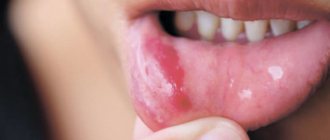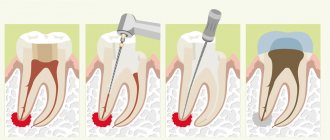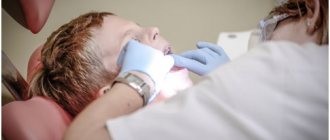According to statistics, 98% of people are afraid of visits to the dentist. As a result, solutions to dental problems are postponed until the last minute, until one day we discover that the tooth has rotted. Then a visit to the doctor is inevitable, but a lot of work remains.
Contrary to popular belief, rotten teeth are not only a result of poor hygiene.
Causes of tooth decay
Yes, we all know that you need to brush your teeth 2 times a day, be sure to use dental floss and visit the dentist 2 times a year. Many patients follow these recommendations, but their teeth still deteriorate and rot. Poor hygiene is not the only reason why teeth deteriorate. There are other factors:
- Gum diseases
provoke the proliferation of bacteria, which literally gnaw through the enamel and destroy tooth tissue; - genetics
plays a role in the ability of teeth to resist pathogenic factors; - an unfavorable ecological environment
leads to the fact that in industrial areas there are more dental problems than in places where there are no factories; - Water quality
directly affects teeth. Low content of useful minerals (fluorine, calcium), high content of heavy metal salts can destroy teeth, despite hygiene; - bad habits
. Smokers have worse teeth than non-smokers and treatment is more difficult; - general diseases
, for example, problems with the gastrointestinal tract, negatively affect the condition of the teeth; - carbohydrates
in the diet , as well as hard food products that injure the gums and enamel lead to tooth decay.
To understand why teeth rot, you need to undergo an examination. Don’t be surprised if the doctor asks you to take tests or do an ultrasound. Dental treatment requires a comprehensive approach and diagnosis is more important than ever. Having found out why teeth are rotting, the doctor will prescribe adequate treatment.
Signs indicating a problem
A purulent neoplasm is difficult to miss. A person complains about:
- discomfort in the affected area, which intensifies with palpation, pressure, chewing food, and talking;
- unpleasant taste in the mouth (caused by periodic discharge of blood and necrotic masses from the abscess);
- tissue swelling;
- swelling of the cheek (indicates that the inflammation has gone very far and emergency dental care is required).
If the patient continues to ignore the symptoms, his health will worsen. His body temperature will rise, headaches and weakness will appear.
A violent inflammatory process will disrupt the dentogingival apparatus. Then the unit will become mobile and can fall out at any moment.
Stages
Caries, like a secret agent, begins to act on the sly and may not make itself felt for years. Its initial stage is called the “white spot stage.” Well, how can you see white on white? That is why it is important to visit the dentist regularly - the specialist will highlight the white spot against the background of the enamel and cure caries in time. And if you start it, the disease goes to the next level:
- Surface.
The enamel is still intact, but in the area of the stain it becomes rough. The stain deepens. The tooth begins to react to cold and hot. - Average.
Caries penetrates to the dentin, but it does not provide access to the pulp. A damaged tooth reacts to temperature, mechanical, and chemical stimuli. But the pain is not constant, it goes away quickly. - Deep.
The pain is sharp when touched, but gradually subsides. A carious cavity is visible to the naked eye.
So, after contacting the doctor, the following algorithm will follow:
- X-rays must be taken to determine the condition of the tooth root.
- The doctor examines the coronal part of the unit and assesses the situation.
- Construction of a treatment plan. The patient should be explained in detail about the clinical picture and methods of its treatment.
- Be sure to carry out comprehensive hygienic treatment of the oral cavity in order to thoroughly remove plaque and tartar.
- If the root is in normal condition and has no deviations, the canals are cleaned, the tooth is polished and filled. In some cases, depulpation, that is, removal of the nerve, may be required. This procedure is necessary if pulpitis is observed against the background of advanced caries.
- If the rotting process is observed at the root, then the only option is to remove the damaged unit and further prosthetics.
Why do children's teeth rot?
In children, the composition of saliva is not the same as in adults. Its antibacterial properties are low; in a warm, humid environment, microbes multiply quickly. The disease is not only common, it progresses rapidly. Caries spreads in width and depth. Single events are rare; usually several teeth are affected at once. For children, timely identification and treatment of problem teeth is of particular importance. Rotten teeth can cause:
- pulpitis and periodontitis;
- malocclusion;
- loss of milk and permanent teeth;
- inflammation of the maxillofacial apparatus.
Bad teeth affect the social adaptation of children and lead to psychological problems.
Prevention includes hygiene procedures, limiting sweets, a balanced diet and regular dental examinations.
Teeth and pregnancy
We found out why children's teeth rot. There is another group of people particularly at risk of tooth decay. These are pregnant women. Some scientists classify pregnancy as an immunodeficiency state - the body's resistance to pathogens decreases to such an extent. It’s no wonder that during pregnancy, general diseases worsen and dental problems begin. The increased content of hormones in the body reduces the barrier ability of the epithelium, microorganisms more easily penetrate the gums and begin to multiply.
Help protect your teeth:
- rational and balanced diet;
- multivitamin complexes;
- professional oral hygiene;
- herbal baths;
- applications with calcium and phosphates.
Is it possible to cure an abscess at home?
Doctors do not allow you to open a flux tumor on your own. This may lead to the addition of a secondary infection. If you are unable to visit a dental clinic in the coming days, you can alleviate the uncomfortable symptoms with the help of:
- Therapeutic and prophylactic rinses. When performing them, you need to use water at room temperature, salt and soda, and pharmaceutical antiseptics.
- Apply cold compresses to the sore cheek.
Under no circumstances should you heat the inflamed area. This will lead to activation of purulent-necrotic processes and the spread of infection, which is very dangerous.
What to do if a tooth is rotten
Until recently, the only solution to the problem was deletion. Today, dental science offers various methods and techniques for restoring teeth.
The method of influence depends on the specific case. What matters is the depth of the lesion, its area, the stage of the disease and the degree of destruction.
Treatment at the initial stage
At the stain stage, you can do without a drill, because it is this that frightens you the most and makes you put off visiting a doctor.
Apply:
- Ozone therapy
. Ozone treatment destroys bacteria, and special preparations restore enamel. - The laser
also destroys bacteria, without heating the tissue and serves as a good preventive measure for gum disease. - Infiltration treatment
.
The chemical composition destroys bacteria, and the infiltration material “seals” the enamel pores and prevents pathogens from penetrating inside.
Treatment for moderate and severe stages
If the disease is advanced, the dentist will still try to save the tooth. At the same time, you can no longer do without a drill. After the examination, the doctor decides how to treat the decayed tooth. But the general principles are the same: after the administration of anesthesia, all dead tissue is removed, the cavity is disinfected and a filling is placed.
If the crown of a tooth has rotted, but the root has been preserved, after treatment the tooth is prepared for prosthetics using:
- Inlays under the stump.
They replace damaged tooth tissue. Inlays are made from zirconium, ceramics, and precious metals. One part of the tab is inserted into the dental canal, and a crown is put on the other. - Pins.
A pin is a rod that is inserted into the dental canal, and a crown is installed on top. They are made of metal or fiberglass.
Modern prosthetics offer a huge variety of materials. Crowns are made from traditional materials: metals and metal-ceramics, composites, zirconium alloys, and modern metal-free compounds.
Content:
- Why does pus come out of the gums?
- Signs indicating a problem
- Causes of pus discharge from the gums
- How do dentists treat pus in gums?
- Additional procedures to help get rid of purulent gum disease
- Recovery after treatment
- Is it possible to cure an abscess at home?
The presence of purulent exudate in the gum tissue is a dangerous symptom that should never be ignored. If it appears, you should immediately consult your dentist. Otherwise, the inflammatory process will progress, which will lead to damage to neighboring structures and premature tooth loss.
Implantation is a solution for advanced cases
Alas, if the root of a tooth has rotted, then the only solution is removal. But even here, dentists offer a method that will help restore a rotten tooth - implantation. The implant will stop bone loss, prevent loosening and tilting of neighboring teeth, and restore your smile. The immediate loading method involves placing an implant immediately after tooth extraction. There is no need to wait for the hole to heal and you can chew almost immediately.
To understand how to treat tooth roots, pay attention to the symptoms!
Root canal treatment is only required when x-rays show that the pulp has been damaged by a bacterial infection. If soft tissue becomes infected with bacteria, it begins to die, allowing the bacteria to multiply and spread further.
Symptoms of a pulp infection include:
- pain when eating, drinking hot or cold foods and drinks
- pain when biting or chewing
- shaky/loose condition of the tooth in the gum
As the infection progresses, these symptoms often disappear temporarily as the soft tissue dies. You may think that the tooth has recovered, but in fact the infection is spreading through the root canal system into the jaw bone.
Eventually, the symptoms return, but in a different form and can cause the following complications:
- Increased and longer-lasting pain returns, even when pressing on the tooth
- the gums near the affected tooth swell
- pus oozes from the affected tooth
- Facial swelling occurs
- the tooth becomes darker in color
It is very important to consult a dentist before the above symptoms occur, even at the stage of increased sensitivity and minor pain. If your tooth is infected, the pulp cannot heal on its own. Leaving an infected tooth alone can make the situation worse, while reducing the chances of successful root canal treatment
Antibiotics (drugs to treat bacterial infections) are ineffective in treating dental root canals. Look at prices for tooth root treatment (endodontic treatment)










